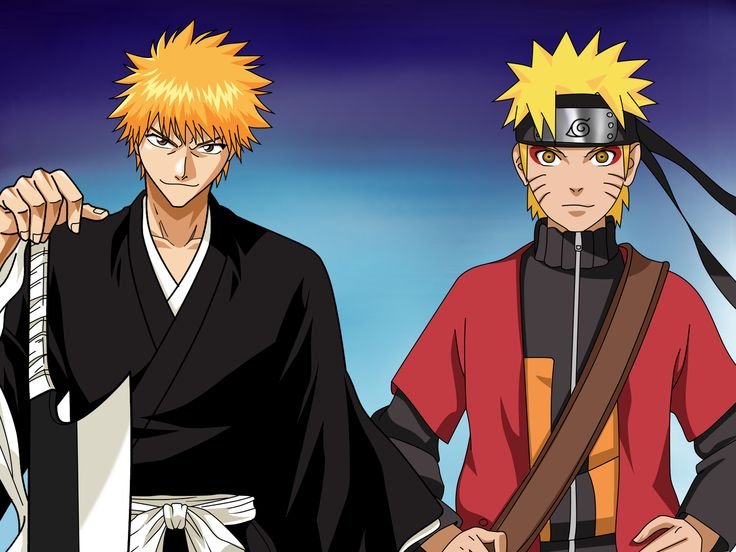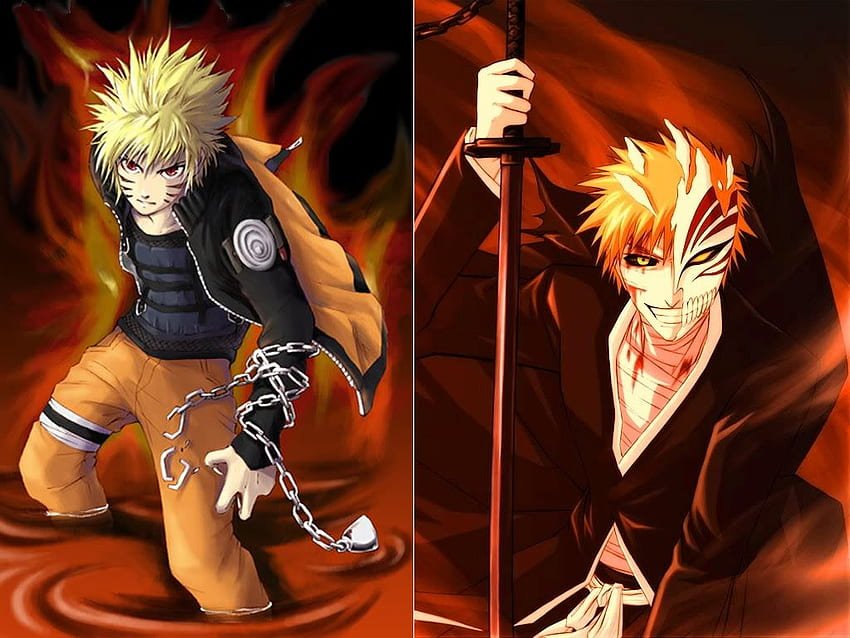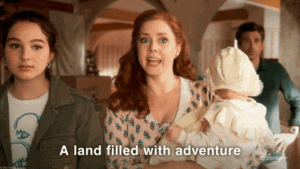Explore the ultimate comparison between Bleach vs Naruto, focusing on their characters, story arcs, and cultural impacts. Discover which anime reigns supreme in this detailed showdown.
In the pantheon of anime, few series have sparked as much debate and devotion as “Bleach vs Naruto.” Both franchises have left indelible marks on the genre, captivating millions of fans worldwide with their compelling characters, intricate plotlines, and thematic depth. This post dives into the epic showdown of ‘Bleach vs Naruto,’ comparing their worlds, characters, themes, and cultural impacts to see which series might claim the crown in the hearts of anime enthusiasts.
Bleach vs Naruto Fight Breakdown
Creating a hypothetical fight breakdown between the five main characters from “Naruto” and “Bleach” presents an intriguing challenge, given the vast differences in the worlds, powers, and themes of each series. For the purpose of this imaginative scenario, let’s consider the five main characters from each series based on their prominence, power, and impact within their respective narratives.
For “Naruto,” we’ll focus on Naruto Uzumaki, Sasuke Uchiha, Sakura Haruno, Kakashi Hatake, and Hinata Hyuga. From “Bleach,” we’ll highlight Ichigo Kurosaki, Rukia Kuchiki, Renji Abarai, Uryu Ishida, and Sosuke Aizen (as a key antagonist who plays a pivotal role throughout the series).
Naruto Uzumaki vs. Ichigo Kurosaki

Battle Scenario: This matchup pits the protagonists of each series against each other. Naruto, with his mastery over the Rasengan, Sage Mode, and the immense power of the Nine-Tails Fox, faces off against Ichigo, who wields Zangetsu, has access to Shinigami powers, Hollowfication, and later, Quincy abilities.
Outcome: A battle of high intensity and explosive power. Naruto’s ability to create shadow clones and Ichigo’s speed and Getsuga Tenshou would create a visually stunning fight. Given Naruto’s resilience and Ichigo’s adaptability, it might end in a draw, with each gaining mutual respect for the other.
Sasuke Uchiha vs. Rukia Kuchiki

Battle Scenario: Sasuke’s Sharingan and Rinnegan grant him a wide array of abilities including Amaterasu and teleportation, while Rukia’s Zanpakuto, Sode no Shirayuki, allows her to control ice, freezing anything it touches.
Outcome: Sasuke’s speed and tactical genius, combined with the versatility of his dojutsu, would likely give him the edge over Rukia’s ice-based attacks, although her Bankai, which lowers the temperature to near absolute zero, could pose a significant threat if it hits.
Sakura Haruno vs. Renji Abarai

Battle Scenario: Sakura’s superhuman strength and healing abilities from her mastery of chakra control face off against Renji’s Zanpakuto, Zabimaru, which extends and can transform into a skeletal serpent during Bankai, increasing its destructive power.
Outcome: While Renji’s Bankai provides a formidable offensive, Sakura’s healing abilities and monstrous strength could potentially allow her to withstand and counterattack effectively, possibly leading to her victory.
Kakashi Hatake vs. Uryu Ishida

Battle Scenario: Kakashi, with his Sharingan, is a master tactician and versatile ninja, able to use a wide range of jutsu, including the Lightning Blade. Uryu, a Quincy, uses a bow made of spiritual energy and has techniques capable of massive destruction.
Outcome: Kakashi’s experience and strategic mind, coupled with the ability to copy and predict enemy moves, might give him an upper hand. However, Uryu’s long-range attacks and high-speed movements would make him a difficult target, potentially making this fight a battle of endurance.
Hinata Hyuga vs. Sosuke Aizen

Battle Scenario: Hinata, with her Byakugan and Gentle Fist technique, can see and target chakra points, potentially crippling opponents with precise strikes. Aizen, however, is a master manipulator with incredible spiritual pressure and the ability to cast illusions with his Zanpakuto, Kyoka Suigetsu.
Outcome: Despite Hinata’s prowess and noble heart, Aizen’s overwhelming power and cunning, especially his near-immortality after fusing with the Hogyoku, would likely make him the victor. Aizen’s illusions could easily deceive Hinata, giving him the upper hand.
Background and Overview
The World of Naruto
The universe of “Naruto” is a sprawling epic that centers around the journey of Naruto Uzumaki, a young ninja with dreams of becoming the Hokage, the leader of his village. The series is set in a world filled with hidden villages, each with its own ninja society and governed by a Kage. Naruto’s story is one of resilience; born as the host of the Nine-Tails Fox—a creature that once attacked his village—he faces ostracization from his peers from a young age. Despite this, his story is ultimately uplifting, showcasing themes of friendship, perseverance, and redemption. Through his eyes, we’re introduced to a complex world where ninja wield elemental powers, and the bonds of friendship often determine the fate of nations.
The Universe of Bleach
“Bleach” presents a starkly different universe, centered around Ichigo Kurosaki, a seemingly ordinary teenager with the ability to see ghosts. His life changes dramatically when he inadvertently becomes a Shinigami (Soul Reaper) and takes on the duty of guiding departed souls to the afterlife and protecting the living world from corrupt spirits, known as Hollows. The series explores the afterlife with a unique lens, blending Japanese mythology with dynamic action sequences. Set against the backdrop of the Soul Society, a dimension where deceased souls reside, “Bleach” delves into themes of duty, identity, and the moral complexities of justice. Ichigo’s journey is not just about battles; it’s a quest for identity, as he navigates the responsibilities thrust upon him while uncovering the mysteries of the Shinigami world.
Character Development and Story Arcs

Protagonists’ Journey
The heart of the ‘Bleach vs Naruto’ debate often lies in the development of their protagonists. Naruto Uzumaki’s growth is a compelling narrative of resilience against all odds. Beginning as an outcast with a dream, Naruto’s journey is fraught with challenges that test his spirit, resolve, and the very ideals he cherishes. His evolution from a mischievous loner to a hero and eventually the leader of his village, the Hokage, is a testament to his unbreakable will and the power of believing in oneself.
Conversely, Ichigo Kurosaki’s story in “Bleach” starts from a place of innate power that he learns to control and understand. His path is one of discovery, as he learns about his heritage and the true extent of his powers. Unlike Naruto, Ichigo’s journey is more about reconciling his dual nature as a human and a Shinigami, and what it means to protect those he cares about. His growth is characterized by his increasing acceptance of his responsibilities and the complexities of the spiritual world he is part of.
Supporting Characters and Their Growth
No analysis of ‘Bleach vs Naruto’ would be complete without considering the rich tapestry of supporting characters that populate both worlds. “Naruto” shines with its diverse cast, each with their own backstories and personal struggles. Characters like Sasuke Uchiha and Sakura Haruno are not merely sidekicks but individuals with their own paths that intersect with Naruto’s. Their development is integral to the main narrative, showcasing themes of loss, redemption, and the search for one’s place in the world.
“Bleach,” too, boasts a compelling ensemble. Rukia Kuchiki, Renji Abarai, and the captains of the Soul Society are not just powerful warriors but complex characters who face their own dilemmas and moral questions. Their stories and struggles provide depth to the world of “Bleach,” enriching Ichigo’s journey and the series’ exploration of duty and identity.
Villains and Antagonists

The antagonists in both series add layers of complexity to the respective narratives. “Naruto’s” villains, such as Orochimaru and Pain, are not evil for the sake of evil; they are characters with motivations rooted in their tragic pasts and ideologies. This complexity invites viewers to empathize with them, even as they oppose the protagonists.
In “Bleach,” characters like Aizen and the Espada members serve as formidable foes, challenging Ichigo and his allies both physically and ideologically. Their backgrounds and motivations reveal the blurred lines between right and wrong, forcing characters and viewers alike to ponder the nature of power and ambition.
The comparison between ‘Bleach vs Naruto’ extends far beyond their protagonists to encompass the worlds they inhabit, the allies and enemies they encounter, and the themes they explore. Both series offer a unique blend of action, drama, and character development, making them enduring favorites in the anime genre. As we dive deeper into the elements that define “Naruto” and “Bleach,” it becomes clear that choosing between them is not a matter of superiority but of preference, with each series offering its own distinct flavor to the rich tapestry of anime storytelling.
Themes Explored
The ‘Bleach vs Naruto’ analysis reveals a rich exploration of themes that resonate deeply with audiences. “Naruto” is celebrated for its in-depth examination of societal issues such as discrimination, the pain of loneliness, and the destructive nature of revenge. It teaches the power of empathy, perseverance, and the importance of bonds, exploring how friendships can transcend hatred and bring about change. These themes are woven into the narrative, making “Naruto” a poignant story about the human condition and the struggles we face.
“Bleach,” on the other hand, delves into the existential, questioning the nature of the soul, the afterlife, and what it means to protect. It explores themes of duty, the burden of power, and the search for one’s identity in a world filled with shades of moral ambiguity. “Bleach” challenges its characters—and by extension, its viewers—to consider the impact of their choices and the weight of responsibility that comes with power.
Cultural Impact and Legacy
When discussing ‘Bleach vs Naruto’ in terms of cultural impact, it’s clear both series have significantly shaped the anime landscape. “Naruto” has arguably had a wider cultural reach, inspiring an entire generation with its messages of resilience and friendship. Its influence extends beyond the screen, with merchandise, video games, and even academic studies exploring its themes and impact. “Naruto” has become a global phenomenon, fostering a sense of community among fans worldwide.
“Bleach,” while perhaps not as universally pervasive as “Naruto,” has cultivated a dedicated and passionate fanbase. Its unique take on the afterlife and the complexities of its universe have inspired countless fan theories, artworks, and discussions. “Bleach’s” legacy is marked by its contribution to the genre’s aesthetic and narrative depth, offering a darker, more mature take on the shonen formula.
Art Style and Animation
The visual storytelling in ‘Bleach vs Naruto’ is another area where both series shine, each with its unique artistic flair. “Naruto’s” animation has evolved over the years, from the original series to “Naruto Shippuden,” showing improvements in fluidity and fight choreography. The series’ ability to convey emotion through its characters’ expressions and the dynamic use of color during pivotal scenes has been praised, enhancing the storytelling and impact of its themes.
“Bleach” stands out for its distinctive art style, characterized by its detailed character designs and vibrant use of colors, especially during its epic battles. The series’ animation quality, particularly in its depiction of spiritual powers and the ethereal realms of the Soul Society and Hueco Mundo, adds a layer of immersion to the viewing experience. The visual contrast between the worlds Ichigo navigates—be it the mundane streets of Karakura Town or the otherworldly landscapes of the afterlife—highlights “Bleach’s” artistic depth.
Fandom and Community
The ‘Bleach vs Naruto’ rivalry extends into their respective fandoms, both of which are highly active and creative. “Naruto’s” community is vast, spanning across the globe, and is known for its engaging fan fiction, cosplay, and fan art. The series has inspired countless individuals to create, share, and connect over their love for the story and its characters. Naruto-themed events, from conventions to online forums, provide spaces for fans to celebrate the series and its impact on their lives.
“Bleach’s” fandom, while maybe smaller, is no less passionate. The series has sparked a wealth of fan-created content, including art, music, and narrative extensions. The community is a testament to the series’ ability to captivate and inspire, with fans often citing the depth and complexity of “Bleach’s” lore as a key factor in their engagement. Online communities dedicated to “Bleach” serve as hubs for deep dives into the series’ mythology, character analysis, and speculation about its mysteries.
Shop Now on Amazon: Bleach and Naruto Merch, Action Figures and Funko Pops And More.
Conclusion
The ‘Bleach vs Naruto’ debate is a testament to the enduring appeal and impact of both series. Each offers a unique perspective on themes of friendship, duty, and the journey towards self-discovery. While “Naruto” may edge out in terms of global cultural impact, “Bleach” provides a profound narrative that challenges conventional notions of morality and existence.
Choosing between “Naruto” and “Bleach” is less about determining which is superior and more about acknowledging the distinct experiences they offer to the anime genre. Both series have shaped the landscape of storytelling and animation, leaving lasting legacies that will continue to inspire future generations of fans and creators alike.
In the spirit of the ongoing ‘Bleach vs Naruto’ discourse, we invite readers to share their own experiences and opinions. Which series resonates more with you, and why? How have “Naruto” and “Bleach” influenced your understanding of anime? Let’s continue the conversation in the comments, celebrating the rich narratives and vibrant communities that both series have fostered.





